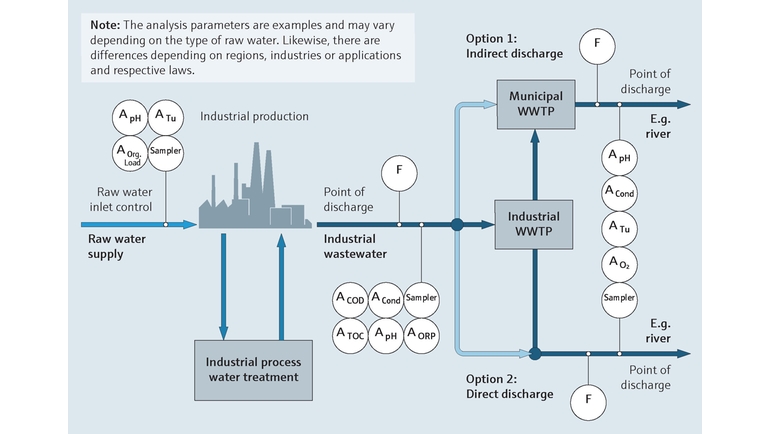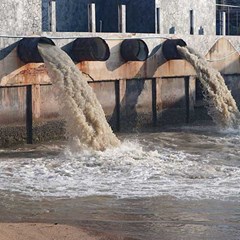Trick Strategies in Industrial Waste Water Therapy Processes
The treatment of industrial wastewater is a crucial facet of environmental management, involving an array of strategies developed to reduce the impact of impurities. From the fundamental physical approaches that divide solids to the innovative chemical and organic processes that target particular contaminants, each strategy plays an important role in attaining water quality standards. Moreover, developments in modern technologies such as membrane layer purification and progressed oxidation processes offer innovative remedies for improving treatment efficiency. Comprehending exactly how these techniques interconnect and their ramifications for sustainability increases crucial inquiries regarding the future of wastewater administration in market.
Physical Therapy Approaches
How successfully can physical therapy approaches deal with the intricacies of industrial wastewater? Physical treatment approaches play an essential function in the initial phases of wastewater management, focusing primarily on the removal of solids and large particulates. Techniques such as flotation, filtering, and sedimentation are crucial for decreasing the concentration of put on hold solids, therefore boosting the effectiveness of subsequent therapy procedures.
Sedimentation involves the gravitational settling of solids, allowing for the splitting up of much heavier materials from the wastewater. This method is specifically reliable in making clear water prior to biological or chemical treatments.
In addition, flotation approaches, which utilize air bubbles to raise suspended solids to the surface area for elimination, are efficient in dealing with wastewater with high concentrations of fats, oils, and oils. Generally, physical therapy techniques act as a critical initial step in the detailed management of commercial wastewater, making sure that the load on subsequent therapy stages is decreased and improving total treatment effectiveness.
Chemical Therapy Techniques
While physical treatment methods prepared for reliable wastewater management, chemical therapy techniques are crucial for resolving the a lot more complex impurities frequently located in industrial effluents. These approaches use various chemical representatives to precipitate, neutralize, or oxidize harmful materials, guaranteeing a more complete removal of pollutants.
One usual method is coagulation and flocculation, where chemical coagulants such as light weight aluminum sulfate or ferric chloride are contributed to advertise the gathering of suspended bits. This procedure improves solid-liquid splitting up, lowering turbidity and enhancing water top quality. Furthermore, neutralization procedures are used to adjust the pH of wastewater, using acids or bases to reduce the effects of acidic or alkaline streams, specifically.
Oxidation-reduction reactions play a critical role in derogatory natural contaminants and microorganisms. Chemical oxidants like chlorine, hydrogen, or ozone peroxide are utilized to break down complicated natural substances, making them much less hazardous or a lot more eco-friendly. Additionally, advanced oxidation procedures (AOPs) integrate numerous oxidation strategies to improve contaminant elimination effectiveness.
Biological Therapy Procedures
The effectiveness of wastewater treatment is considerably improved by biological treatment processes, which harness the natural metabolic activities of bacteria to decay organic issue and get rid of pollutants. Industrial Waste Water Treatment. These procedures mainly entail cardiovascular and anaerobic food digestion, each customized for particular kinds of wastewater
Cardio therapy processes use oxygen to sustain microbial development, promoting the malfunction of natural contaminants into co2 and water. Common techniques consist of triggered sludge systems, where oygenation storage tanks assist in the mixing of wastewater with microorganisms, and trickling filters, which urge biofilm advancement on media surfaces.
Conversely, anaerobic treatment procedures happen in the absence websites of oxygen, utilizing anaerobic microorganisms to disintegrate raw material, causing biogas manufacturing, an eco-friendly power resource. Anaerobic digesters are often employed in commercial setups for this objective, properly lowering the quantity of sludge while generating valuable biogas.
The option of a biological treatment approach depends upon wastewater features, therapy goals, and governing standards. The assimilation of biological procedures in wastewater treatment not just enhances contaminant removal effectiveness but likewise promotes sustainability by lessening chemical use and supporting source recovery.
Advanced Oxidation Processes

Common AOP techniques consist of Fenton's reagent, ozonation, and photocatalysis. Fenton's reagent, a mix of hydrogen peroxide and ferrous iron, catalyzes the development of hydroxyl radicals, making it efficient for dealing with wastewater consisting of phenolic compounds and various other recalcitrant compounds. Ozonation utilizes ozone as an effective oxidant, with the ability of degrading a variety of organic toxins while at the same time disinfecting the effluent. Photocatalysis uses light-activated drivers, such as titanium dioxide, to enhance oxidation responses and get rid of contaminants.
AOPs provide numerous benefits, including decreased sludge manufacturing and the capacity to treat wastewater with high concentrations of natural pollutants. However, the application of AOPs calls for mindful factor to consider of operational specifications and cost-effectiveness, making certain that these advanced techniques are properly incorporated right into existing wastewater therapy systems.
Membrane Layer Filtering Technologies

Microfiltration works for eliminating put on hold microorganisms and solids, while ultrafiltration targets smaller organic molecules and infections. Nanofiltration connects the void between ultrafiltration and turn around osmosis, successfully getting rid of natural compounds and divalent ions. Reverse osmosis supplies the highest degree of purification, used mainly for desalination and eliminating mono-valent ions.
Membrane innovations offer numerous benefits, including low power usage compared to traditional therapy methods, modular style for scalability, and the possibility for water recuperation and reuse. However, obstacles such as membrane layer fouling and the need for normal upkeep need to be dealt with to guarantee system effectiveness. On the whole, membrane filtration technologies represent an important component of modern commercial wastewater treatment strategies, advertising sustainability and resource conservation in water monitoring.
Conclusion
In conclusion, industrial wastewater therapy uses a varied variety of techniques, including physical, chemical, organic, and progressed methods. Proceeded improvements in these techniques will this website even more improve the efficiency and efficiency of wastewater therapy procedures in commercial setups.
The therapy of industrial wastewater is a critical aspect of environmental monitoring, entailing an array of methods designed to reduce the influence of pollutants.Just how effectively can physical therapy techniques address the complexities of industrial wastewater?Advanced oxidation procedures (AOPs) represent a cutting-edge technique in industrial wastewater treatment, created to successfully break down organic pollutants that are commonly immune to conventional therapy techniques (Industrial Waste Water Treatment).In final thought, commercial wastewater therapy uses a varied variety of techniques, including physical, chemical, biological, and progressed techniques. Continued advancements in these techniques will certainly even more enhance the effectiveness and performance of wastewater treatment processes in industrial settings